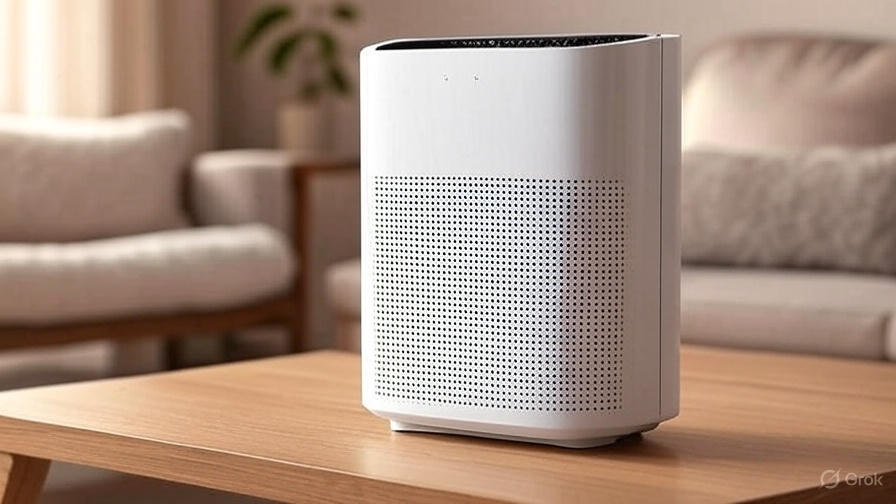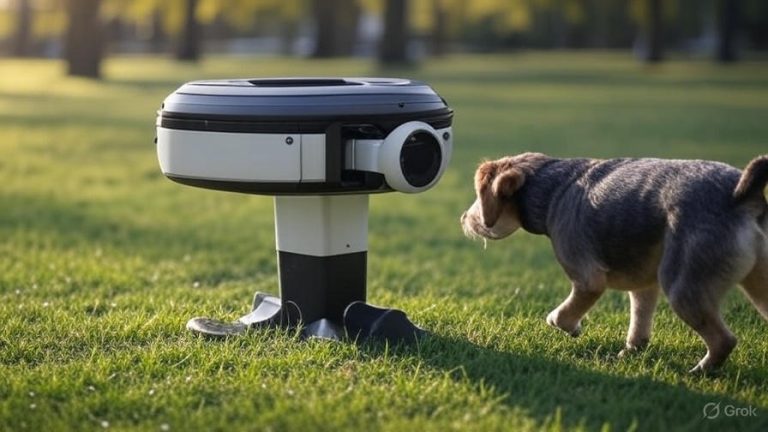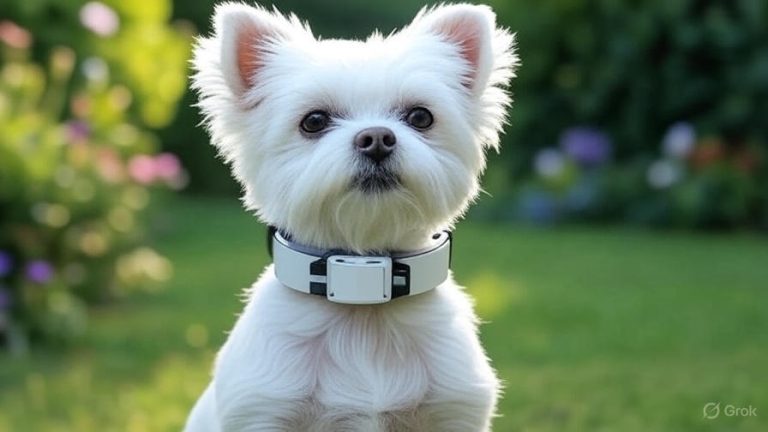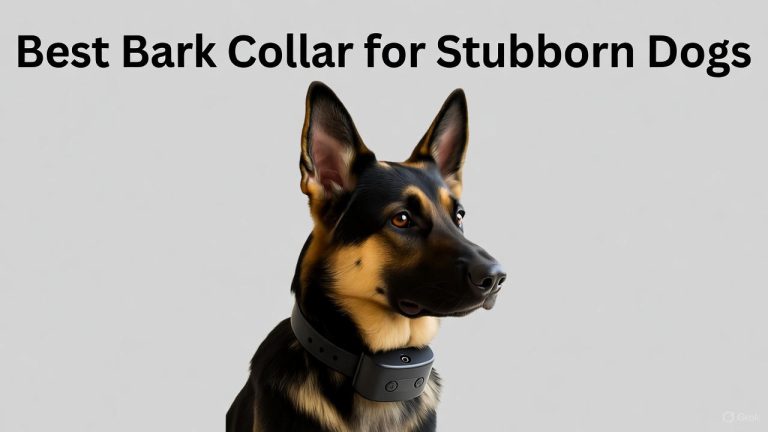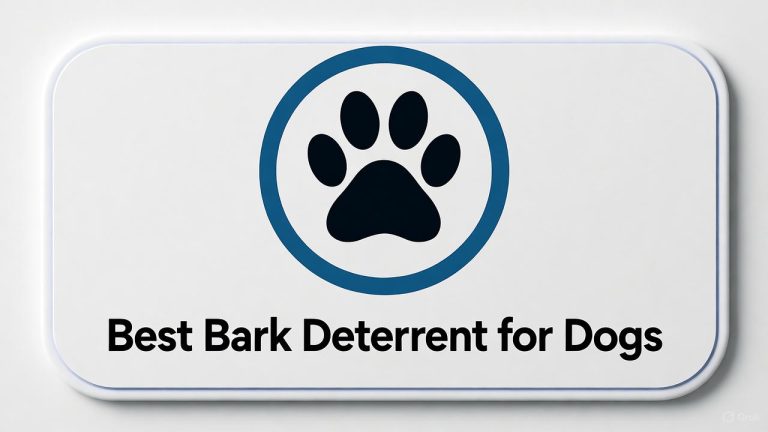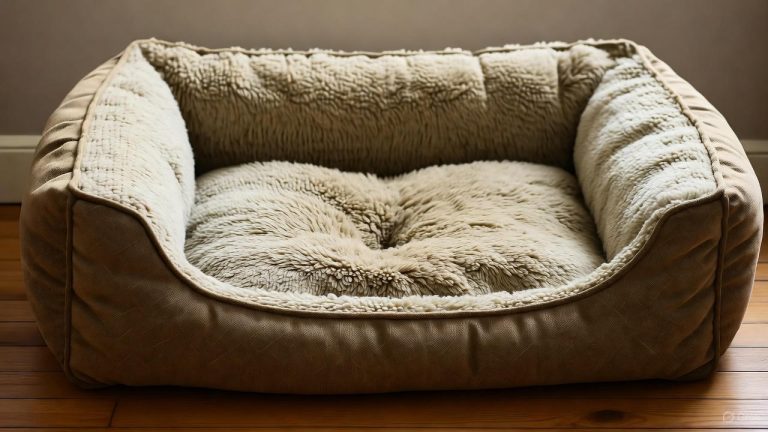5 Best Air Purifiers for Dog Odor In 2025
Dog owners know the struggle all too well. You love your furry companion, but the lingering odors can make your home less inviting for guests and family members. Pet dander, wet dog smell, and accidents create persistent odors that regular cleaning simply cannot eliminate. The right air purifier transforms your living space into a fresh, breathable environment while keeping your beloved pet comfortable.
Air purifiers designed specifically for pet odors use advanced filtration systems to capture microscopic particles and neutralize unpleasant smells. These devices work continuously to maintain clean air quality, removing allergens, hair particles, and odor-causing compounds that settle throughout your home.
This comprehensive guide examines five top-performing air purifiers that excel at eliminating dog odors. Each device offers unique features and capabilities designed to address specific pet-related air quality challenges.
How Air Purifiers Combat Dog Odors
Dog odors stem from multiple sources that require different approaches to eliminate effectively. Pet hair carries oils and dander that circulate through your home’s air system. Saliva, urine, and natural body oils create persistent scents that penetrate fabrics and surfaces. Traditional air fresheners mask these odors temporarily, while quality air purifiers attack the root causes.
HEPA filtration captures particles as small as 0.3 microns, including pet dander and hair fragments. Activated carbon filters absorb odor molecules through a process called adsorption, where gas molecules stick to the carbon surface. Pre-filters catch larger particles like visible hair and debris before they reach the main filtration system.
Advanced air purifiers combine multiple technologies to create comprehensive odor elimination. Some models include ionizers that electrically charge particles, making them easier to capture. Others feature UV-C light that breaks down organic compounds responsible for persistent smells.
The most effective units maintain consistent air circulation, processing your room’s entire air volume multiple times per hour. This continuous cycle prevents odor buildup and maintains consistently fresh air quality throughout your living space.
Top 5 Air Purifiers for Dog Odor Elimination
1. Ozone Odor Eliminator for Strong Odor – Powerful Ionic Air Purification
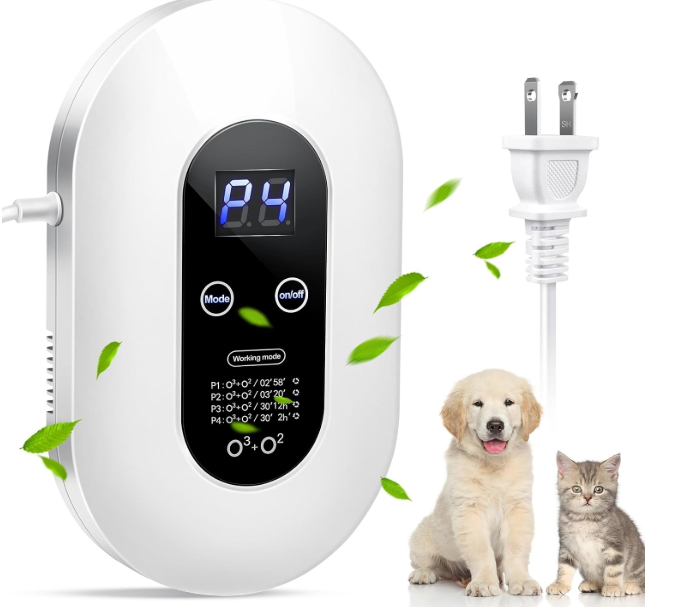
The Ozone Odor Eliminator takes a direct approach to pet odor removal through ionic technology. This compact unit plugs directly into wall outlets, making it perfect for targeted odor elimination in specific areas where your dog spends the most time.
Key Features:
- Ionic technology generates negative ions that neutralize odor particles
- Compact plug-in design fits any standard wall outlet
- No filter replacements required
- Suitable for bedrooms, bathrooms, kitchens, and pet areas
- Addresses multiple odor sources including litter boxes, smoke, and formaldehyde
The device works by releasing negative ions into the air, which attach to positively charged odor particles and allergens. This process causes particles to become heavy and fall to surfaces where they can be easily cleaned away. The continuous ionic generation creates an ongoing barrier against new odor formation.
Performance Analysis: This unit excels in smaller spaces where concentrated odor problems exist. Pet owners report significant improvements in areas where dogs sleep, eat, or spend extended periods. The lack of fans or moving parts makes operation completely silent, ideal for bedrooms or quiet spaces.
However, ozone generation requires careful consideration. While effective for odor elimination, ozone can irritate sensitive respiratory systems. Use this device in unoccupied rooms or ensure adequate ventilation when present.
Best For: Targeted odor elimination in specific rooms, silent operation needs, budget-conscious pet owners seeking immediate results.
2. oneisall Pet Air Purifier – Comprehensive Pet-Focused Filtration
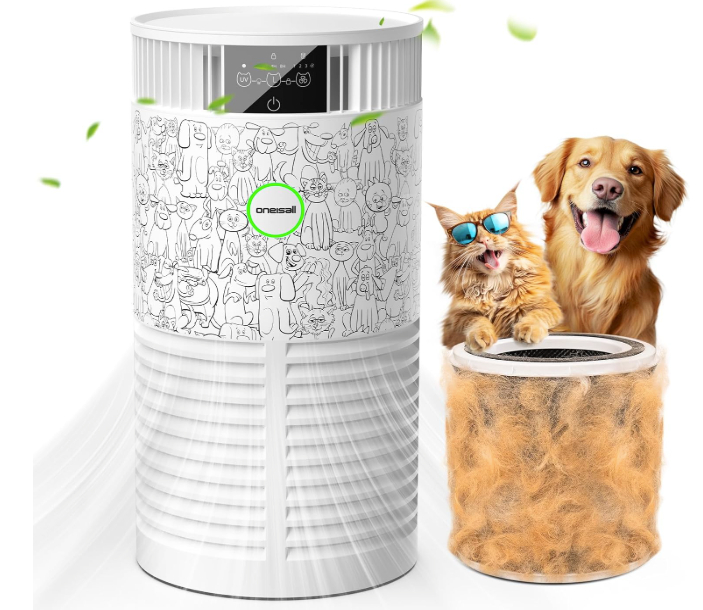
The oneisall Pet Air Purifier specifically targets pet-related air quality issues with a robust 3-in-1 HEPA filtration system. This device covers up to 1,200 square feet, making it suitable for large living areas where dogs roam freely.
Key Features:
- Washable filter covers reduce long-term maintenance costs
- 3-in-1 HEPA filtration system captures hair, dander, and odors
- Quiet operation maintains peaceful home environment
- Large coverage area handles open floor plans
- Specialized design addresses pet-specific air quality challenges
The washable filter covers distinguish this model from traditional air purifiers. These outer covers capture larger particles like pet hair and visible debris, protecting the internal HEPA filter from premature clogging. This design extends filter life significantly while maintaining optimal performance.
Filtration Technology: The pre-filter catches visible hair and large particles during initial air intake. The True HEPA filter removes microscopic allergens and dander particles that trigger respiratory sensitivities. The activated carbon layer absorbs odor molecules and volatile organic compounds released by pet waste and natural body oils.
Performance Analysis: Users consistently praise this unit’s effectiveness in multi-pet households. The large coverage area makes it ideal for open-concept homes where odors can spread quickly between rooms. The quiet operation allows continuous use without disrupting daily activities or sleep patterns.
The washable covers provide significant cost savings over time, as replacement filters can be expensive for heavy-use scenarios. Regular washing maintains peak performance without the recurring expense of disposable pre-filters.
Best For: Multi-pet households, large open spaces, cost-conscious owners wanting long-term value, homes with severe pet hair issues.
3. Tailulu H13 True HEPA Air Purifier – Silent Efficiency for Peaceful Homes
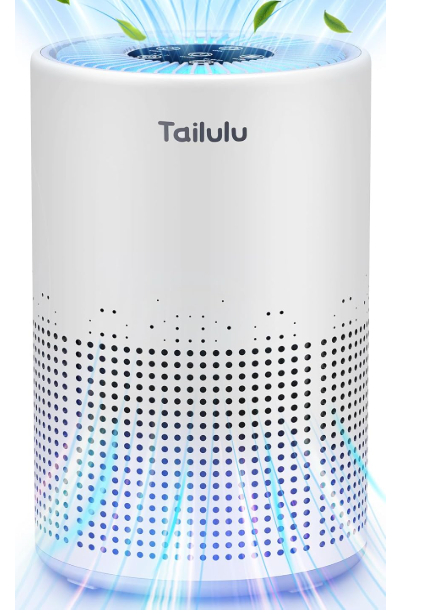
The Tailulu air purifier combines powerful H13 HEPA filtration with whisper-quiet operation. This portable unit delivers professional-grade air cleaning while maintaining the peaceful atmosphere essential for both pets and family members.
Key Features:
- H13 True HEPA filtration captures 99.97% of particles
- 12dB sleep mode operates virtually silently
- Covers up to 1,200 square feet effectively
- Multiple speed settings for different situations
- Built-in timer for automated operation
- Portable design allows easy room-to-room movement
The H13 HEPA standard exceeds typical home air purifier specifications, capturing ultrafine particles that standard filters miss. This higher grade filtration proves especially important for pet owners dealing with microscopic allergens and odor-causing particles.
Advanced Functionality: Sleep mode reduces operation to just 12 decibels, quieter than a whisper. This feature allows continuous overnight operation without disturbing sleep patterns. The timer function enables scheduled operation during peak odor periods, such as after feeding times or outdoor activities.
Speed control adjusts airflow based on current odor levels. High speeds quickly address sudden odor spikes, while lower settings maintain baseline air quality throughout the day. This flexibility optimizes both performance and energy consumption.
Performance Analysis: The combination of powerful filtration and silent operation makes this unit exceptional for bedrooms and quiet spaces. Pet owners appreciate the ability to address odor issues without adding noise pollution to their homes.
The portable design allows strategic placement where odors are most problematic. Move the unit to high-traffic pet areas during the day, then relocate to bedrooms for overnight purification.
Best For: Noise-sensitive households, bedroom use, families wanting flexible placement options, homes requiring both power and peace.
4. BLUEAIR Blue Pure 211i Max – Premium Large Room Coverage
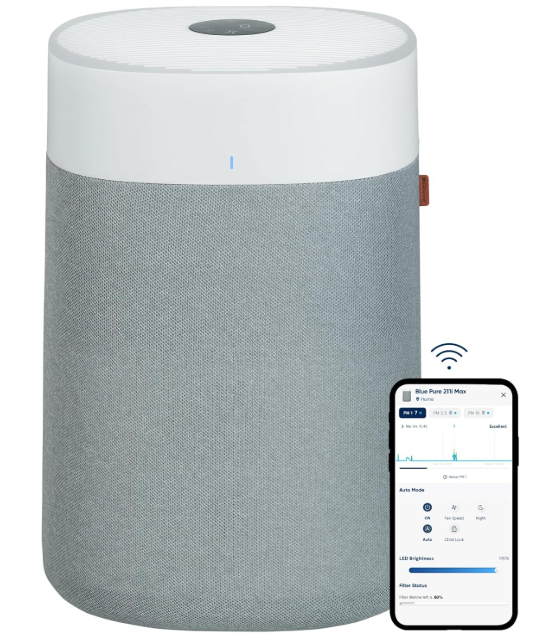
The BLUEAIR Blue Pure 211i Max represents premium air purification technology designed for serious odor challenges. This unit processes air in rooms up to 3,048 square feet within one hour, making it suitable for entire home purification.
Key Features:
- Cleans 3,048 square feet in one hour
- HEPASilent technology combines mechanical and electrostatic filtration
- Smart sensors automatically adjust operation based on air quality
- Low energy consumption despite powerful performance
- Quiet operation even at high speeds
- Professional-grade construction for long-term reliability
HEPASilent technology sets this unit apart from conventional air purifiers. The combination of electrostatic charging and mechanical filtration captures particles more efficiently while using less energy. This dual approach proves especially effective against pet odors that contain both large and microscopic components.
Smart Technology Integration: Built-in air quality sensors continuously monitor particle levels and automatically adjust fan speed accordingly. During periods of high pet activity, the unit increases airflow to address odor spikes immediately. When air quality improves, the system reduces operation to maintain efficiency.
The smart functionality learns your home’s patterns, anticipating odor issues before they become noticeable. This proactive approach prevents odor buildup rather than simply reacting to existing problems.
Performance Analysis: The large coverage area makes this unit ideal for whole-home purification. Instead of needing multiple smaller units, one Blue Pure 211i Max can handle most residential spaces effectively. This approach provides more consistent air quality and better value for larger homes.
The premium construction ensures reliable long-term operation even with continuous use. Pet owners report years of consistent performance without significant maintenance issues or declining effectiveness.
Best For: Large homes, whole-house purification needs, tech-savvy users wanting automated operation, households with multiple large dogs.
5. MOOKA HEPA Air Purifier – Budget-Friendly Multi-Feature Solution
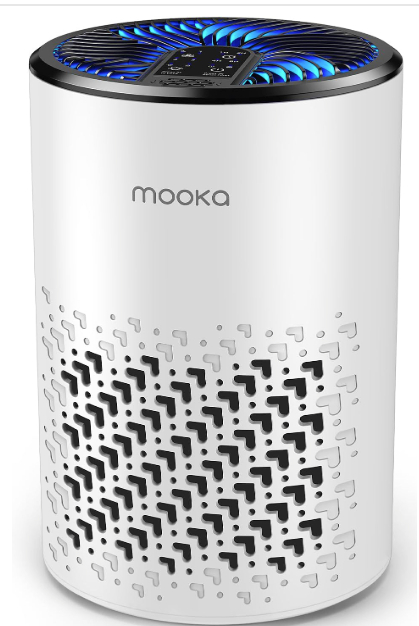
The MOOKA air purifier delivers comprehensive pet odor elimination at an accessible price point. This compact unit includes unique features like fragrance sponge capability and ambient lighting that enhance the user experience beyond basic air purification.
Key Features:
- True HEPA filtration captures microscopic particles
- Fragrance sponge allows custom scent addition
- Sleep mode with adjustable night light
- Timer function for automated operation
- Compact size fits easily into any room
- Multiple fan speeds for different situations
The fragrance sponge feature distinguishes this model from purely functional air purifiers. Add essential oils or pet-safe fragrances to create pleasant scents while eliminating odors. This dual approach provides immediate olfactory improvement while the filtration system addresses underlying odor sources.
Practical Design Elements: The adjustable night light serves both functional and aesthetic purposes. Use dim lighting for nighttime navigation without disturbing sleep patterns. The gentle illumination also provides visual confirmation that the unit operates correctly during overnight use.
Sleep mode reduces noise levels while maintaining effective air circulation. This balance ensures continuous odor control without creating disturbances that might affect both human and pet sleep quality.
Performance Analysis: Despite its budget-friendly price, this unit delivers reliable performance for small to medium rooms. The combination of HEPA filtration and activated carbon effectively addresses most pet odor situations without requiring premium pricing.
The fragrance capability provides immediate gratification while deeper odor elimination takes effect. This feature particularly benefits homes transitioning from traditional air fresheners to proper air purification systems.
Best For: Budget-conscious pet owners, small to medium rooms, users wanting customizable fragrance options, first-time air purifier buyers.
Essential Features for Pet Odor Elimination
True HEPA Filtration
True HEPA filters remove 99.97% of particles 0.3 microns or larger. This specification ensures capture of pet dander, microscopic hair fragments, and dust particles that carry odor compounds. Lower-grade filters might claim HEPA-type or HEPA-like performance but lack the rigorous testing standards of True HEPA certification.
Pet dander consists of tiny skin flakes that become airborne and settle throughout your home. These particles carry proteins that trigger allergic reactions and contribute to persistent odors. Only True HEPA filtration reliably captures these microscopic irritants.
Activated Carbon Technology
Activated carbon filters absorb odor molecules through chemical adsorption. The carbon’s porous structure provides enormous surface area for trapping gas molecules responsible for unpleasant smells. Quality carbon filters use coconut shell or coal-based carbon treated to maximize absorption capacity.
Pet odors often include ammonia from urine, organic compounds from saliva, and natural oils from skin and fur. Activated carbon neutralizes these diverse odor sources more effectively than mechanical filtration alone.
Pre-Filtration Systems
Pre-filters capture large particles before they reach main filtration components. This preliminary stage removes visible pet hair, lint, and debris that could clog expensive HEPA filters prematurely. Washable pre-filters reduce long-term operating costs while maintaining optimal airflow.
Some units feature multiple pre-filter stages for enhanced particle capture. These systems handle heavy pet hair loads without compromising the primary filtration effectiveness.
Air Exchange Rates
Effective pet odor elimination requires processing your room’s air volume multiple times per hour. Quality units achieve 4-6 air changes hourly, ensuring rapid odor removal and preventing accumulation. Higher exchange rates prove especially important in homes with multiple pets or severe odor challenges.
Calculate your room’s cubic footage and compare it to the purifier’s specified capacity. Units operating near their maximum capacity may struggle with sudden odor spikes or heavy pet activity periods.
Room Size Considerations
Small Rooms (Up to 300 Square Feet)
Compact air purifiers handle small bedrooms, bathrooms, and pet sleeping areas effectively. These spaces benefit from units that prioritize quiet operation and focused filtration over massive airflow capacity. The MOOKA and Tailulu models excel in these environments.
Small room purifiers often provide the highest air exchange rates relative to space size. This intensive processing quickly eliminates odors in confined areas where smells concentrate rapidly.
Medium Rooms (300-800 Square Feet)
Living rooms, larger bedrooms, and kitchen areas require balanced performance between coverage and intensity. Units in this category must handle varied odor sources while maintaining quiet operation for daily activities.
Medium room purifiers typically offer multiple fan speeds to adjust performance based on current needs. Use higher speeds during active periods and lower settings for background maintenance.
Large Rooms (800+ Square Feet)
Open-concept homes and large family rooms demand powerful units with extensive coverage capabilities. The BLUEAIR Blue Pure 211i Max excels in these challenging environments with its 3,048 square foot capacity.
Large room purifiers often incorporate smart sensors to automatically adjust operation based on detected air quality changes. This automation ensures consistent performance across expansive spaces without manual intervention.
Filter Maintenance and Replacement
HEPA Filter Lifespan
HEPA filters typically last 6-12 months depending on usage intensity and air quality conditions. Homes with multiple pets or severe odor issues may require more frequent replacements. Monitor filter condition through visual inspection and performance changes.
Some units include filter replacement indicators that track usage time and alert users when maintenance becomes necessary. These systems prevent performance degradation from overused filters.
Carbon Filter Considerations
Activated carbon filters lose effectiveness as absorption sites become saturated with odor molecules. Unlike HEPA filters that show visible dirt accumulation, carbon filters may appear clean while offering reduced odor absorption.
Replace carbon filters every 3-6 months for optimal odor elimination. Some units feature separate carbon cartridges that allow independent replacement without changing the entire filter assembly.
Pre-Filter Maintenance
Washable pre-filters require regular cleaning to maintain optimal airflow. Clean these filters weekly or bi-weekly depending on pet hair production and household dust levels. Clogged pre-filters reduce overall system effectiveness and increase energy consumption.
Rinse washable filters with cool water and allow complete drying before reinstallation. Avoid harsh detergents that might damage filter materials or leave residues that affect air quality.
Noise Level Considerations
Sleep Mode Operations
Many pet odor purifiers feature specialized sleep modes that reduce noise while maintaining effective filtration. These modes typically operate at 20-30 decibels, comparable to rustling leaves or quiet whispers.
Sleep mode benefits both human and pet comfort during nighttime hours. Dogs have sensitive hearing that can be disturbed by continuous mechanical noise, making quiet operation essential for household harmony.
Daytime Performance Balance
Effective odor elimination often requires higher fan speeds that generate more noise. Quality units balance powerful performance with acceptable sound levels for normal household activities.
Variable speed controls allow users to increase power during high-odor periods and reduce noise during quiet activities. This flexibility ensures both effective odor control and comfortable living conditions.
Energy Efficiency and Operating Costs
Power Consumption Analysis
Modern air purifiers use LED technology and efficient motors to minimize electricity consumption. Most units consume 20-50 watts during normal operation, comparable to a standard light bulb.
Energy Star certified models meet strict efficiency standards while delivering powerful performance. These units reduce environmental impact and operating costs without sacrificing odor elimination effectiveness.
Long-Term Value Assessment
Initial purchase price represents only part of total ownership costs. Factor in filter replacement expenses, energy consumption, and expected lifespan when evaluating different models.
Units with washable components and longer filter life provide better value despite potentially higher upfront costs. Calculate annual operating expenses to make informed purchasing decisions.
Placement Strategies for Maximum Effectiveness
Optimal Room Positioning
Place air purifiers in areas where your dog spends the most time for maximum odor capture. Central locations provide better air circulation than corner placements, while avoiding obstacles ensures proper airflow.
Position units at least three feet from walls and furniture to allow unrestricted air intake and output. This spacing prevents air circulation dead zones that reduce overall effectiveness.
Multiple Unit Configurations
Large homes or severe odor situations may benefit from multiple smaller units rather than one large purifier. This approach provides more targeted treatment and redundancy if one unit requires maintenance.
Coordinate multiple units to avoid competing airflow patterns. Stagger operation schedules to maximize coverage while minimizing energy consumption during low-odor periods.
Health Benefits Beyond Odor Control
Allergen Reduction
Air purifiers targeting pet odors simultaneously reduce allergens that trigger respiratory sensitivities. Pet dander contains proteins that cause allergic reactions in sensitive individuals, including family members and guests.
Consistent allergen removal improves indoor air quality for everyone, not just those specifically bothered by pet odors. This broader health benefit justifies air purifier investment for many families.
Respiratory Wellness
Clean air reduces respiratory stress for both humans and pets. Dogs with breathing sensitivities benefit from reduced airborne irritants, while family members experience fewer allergy symptoms and improved sleep quality.
Eliminating odor-causing particles also removes many harmful compounds that can affect long-term respiratory health. This preventive approach protects family wellness beyond immediate comfort improvements.
Technology Comparisons
HEPA vs. Ionic Systems
HEPA filtration provides proven, measurable particle removal with clear performance standards. These mechanical filters capture particles physically without generating potentially harmful byproducts.
Ionic systems neutralize particles through electrical charging, which can be highly effective for odor elimination. However, some ionic units produce small amounts of ozone that require ventilation considerations.
The most effective approach often combines both technologies, using HEPA filtration for particle capture and ionic enhancement for odor neutralization.
Smart Features and Automation
Advanced air purifiers include sensors that detect air quality changes and adjust operation automatically. These smart systems respond to odor spikes immediately without manual intervention.
Wi-Fi connectivity allows remote monitoring and control through smartphone apps. Schedule operation times, monitor filter life, and adjust settings while away from home.
Some units feature air quality displays that show real-time particle levels and system performance. These visual indicators help users understand when odor problems exist and confirm when air quality improves.
Seasonal Considerations
Summer Challenges
Hot weather intensifies pet odors as heat accelerates bacterial growth and increases natural oil production. Air conditioning systems can circulate odor particles throughout the home more rapidly during summer months.
Increase air purifier operation during hot weather to compensate for accelerated odor production. Higher humidity levels also affect odor intensity, making consistent air processing more important.
Winter Indoor Air Quality
Closed windows and reduced ventilation during cold weather trap pet odors inside. Heating systems can dry the air, making odor particles more likely to become airborne and circulate.
Air purifiers become especially valuable during winter when natural ventilation decreases. Continuous operation maintains air quality when opening windows for fresh air becomes impractical.
Allergy Season Management
Spring and fall allergy seasons bring additional airborne particles from outdoor sources. These particles combine with pet dander to create more complex air quality challenges.
Increase filtration intensity during high pollen periods to address both outdoor allergens and pet-related particles simultaneously. This comprehensive approach maintains optimal indoor air quality regardless of seasonal challenges.
Maintenance Best Practices
Regular Cleaning Schedules
Establish weekly cleaning routines that include vacuuming around air purifier intake areas. Pet hair and dust accumulation near the unit can reduce intake efficiency and strain the motor.
Wipe exterior surfaces monthly to remove dust buildup that can affect air circulation. Clean intake grilles and output vents to maintain optimal airflow patterns.
Filter Monitoring
Track filter replacement dates to ensure consistent performance. Overused filters lose effectiveness gradually, allowing odor problems to return without obvious cause.
Keep replacement filters in stock to avoid gaps in air purification coverage. Some suppliers offer subscription services that automatically deliver filters based on usage schedules.
Performance Optimization
Monitor room air quality to determine optimal operation schedules. Some homes benefit from continuous low-level operation, while others require intensive treatment during specific periods.
Adjust placement seasonally to address changing airflow patterns and pet behavior. Dogs may spend more time in different areas depending on temperature and household activities.
Cost-Effectiveness Analysis
Initial Investment Considerations
Higher-quality air purifiers often provide better long-term value despite increased upfront costs. Premium units typically feature more durable construction, longer-lasting filters, and superior performance that justifies the additional expense.
Budget models can provide effective odor elimination for less severe situations or smaller spaces. Evaluate your specific needs against available features to find the optimal price-performance balance.
Operating Expense Planning
Filter replacement costs vary significantly between models and usage patterns. Calculate annual filter expenses based on manufacturer recommendations and your home’s specific conditions.
Energy consumption affects monthly utility bills, though most modern units operate efficiently. Compare power ratings when evaluating similar models to identify the most economical options.
Value-Added Features
Some air purifiers include features that provide additional value beyond basic odor elimination. Night lights, fragrance dispensers, and air quality monitors enhance user experience and may justify higher prices.
Smart connectivity and automated operation can improve convenience and effectiveness, potentially providing better results with less user intervention.
Pet Safety Considerations
Ozone-Free Operation
Many pets have sensitive respiratory systems that can be irritated by ozone emissions. Choose air purifiers that specifically advertise ozone-free operation to ensure pet safety.
Units using only mechanical filtration and activated carbon provide effective odor elimination without generating potentially harmful gases. This approach prioritizes both effectiveness and pet wellbeing.
Noise Sensitivity
Dogs have more sensitive hearing than humans and may be disturbed by high-frequency noises that humans cannot detect. Test air purifier operation while observing your pet’s behavior for signs of stress or discomfort.
Some dogs adapt quickly to consistent background noise, while others remain sensitive to mechanical sounds. Consider your pet’s personality and noise tolerance when evaluating different models.
Placement Safety
Position air purifiers where pets cannot knock them over or interfere with operation. Curious dogs may investigate new devices, potentially damaging equipment or injuring themselves.
Ensure power cords remain out of reach to prevent chewing damage that could create electrical hazards. Use cord management solutions if necessary to maintain safe installation.
Comparative Performance Analysis
Odor Elimination Speed
Different technologies address odors at varying rates. Ionic units often provide immediate improvement as charged particles settle quickly. HEPA systems offer thorough long-term elimination but may require more time for noticeable results.
The most effective approach combines rapid initial improvement with sustained long-term performance. Units featuring multiple technologies can address both immediate comfort and lasting air quality improvements.
Coverage Area Accuracy
Manufacturer coverage specifications often assume ideal conditions with minimal odor sources. Real-world performance in pet homes may require units rated for larger areas than the actual room size.
Consider choosing units rated for 25-50% larger areas than your actual space to ensure adequate performance under challenging conditions. This oversizing approach provides performance margin for heavy odor situations.
Filter Efficiency Ratings
HEPA filters use standardized testing methods that allow accurate performance comparisons. Higher-grade filters (H13, H14) capture smaller particles but may require more powerful fans to maintain airflow.
Carbon filter efficiency varies significantly based on carbon quality, treatment methods, and filter thickness. Thicker carbon layers generally provide better odor absorption but may increase replacement costs.
Special Considerations for Multi-Pet Households
Increased Filtration Demands
Multiple pets generate proportionally more odors, hair, and airborne particles. Standard air purifier recommendations may prove inadequate for homes with several dogs or mixed pet types.
Consider upgrading to commercial-grade units or installing multiple residential units to handle increased filtration demands. Professional-grade systems often provide better value for severe multi-pet situations.
Odor Source Diversity
Different pets contribute unique odor profiles that may require varied filtration approaches. Combine units with different strengths to address the full spectrum of odor sources present in multi-pet environments.
Some pets produce more dander, while others generate stronger natural odors. Assess your specific situation to determine the most effective filtration strategy.
Integration with Existing HVAC Systems
Whole-House Integration Options
Some air purifiers can integrate with existing heating and cooling systems to provide whole-house purification. This approach offers comprehensive coverage without requiring multiple standalone units.
Professional installation may be required for HVAC integration, but the result provides consistent air quality throughout the entire home. This solution particularly benefits larger homes with central air systems.
Complementary Operation
Standalone air purifiers complement existing HVAC filtration without requiring system modifications. This approach allows targeted treatment in problem areas while maintaining existing comfort systems.
Coordinate operation schedules to maximize effectiveness while avoiding system conflicts. Some homeowners run air purifiers during periods when HVAC systems cycle less frequently.
Environmental Impact and Sustainability
Filter Disposal Considerations
Used HEPA and carbon filters require proper disposal as they contain captured contaminants. Some manufacturers offer recycling programs for used filters, reducing environmental impact.
Washable components reduce waste generation and provide more sustainable long-term operation. Balance environmental considerations with performance needs when evaluating different models.
Energy Efficiency Standards
Energy Star certified air purifiers meet strict efficiency standards while delivering required performance. These units reduce carbon footprint and operating costs without sacrificing odor elimination effectiveness.
Modern units use LED displays and efficient motors that minimize power consumption. Solar-powered operation remains impractical for most air purifiers due to power requirements, but grid electricity efficiency continues improving.
Troubleshooting Common Issues
Reduced Performance Over Time
Declining effectiveness often indicates clogged filters or reduced airflow. Check all filter components and clean or replace as needed to restore optimal performance.
Dust accumulation on internal components can reduce fan efficiency and air circulation. Professional cleaning may be required for units experiencing significant performance degradation.
Persistent Odors Despite Operation
Some odor sources require additional intervention beyond air purification. Address underlying causes like carpet contamination, hidden waste deposits, or inadequate cleaning before expecting complete odor elimination.
Air purifiers work best as part of comprehensive odor management strategies that include regular cleaning, proper pet hygiene, and source elimination.
Unusual Noises or Vibrations
Mechanical issues may develop over time, especially in units operating continuously. Loose components, worn bearings, or debris interference can create abnormal sounds.
Contact manufacturer support for persistent mechanical issues, as internal repairs often require professional service. Regular maintenance helps prevent many common mechanical problems.
Long-Term Investment Perspective
Total Cost of Ownership
Calculate complete ownership costs including purchase price, filter replacements, energy consumption, and potential repairs. This comprehensive analysis reveals the true value of different models over their expected lifespan.
Premium units often provide better long-term value through superior construction, longer filter life, and more efficient operation. Balance initial investment against projected long-term expenses.
Performance Longevity
Quality air purifiers maintain effectiveness for many cycles of filter changes. Cheap units may experience motor failure, reduced airflow, or other issues that require premature replacement.
Research manufacturer warranties and customer service reputation when making investment decisions. Strong support indicates confidence in product longevity and provides protection for your investment.
Final Recommendations
The best air purifier for dog odor depends on your specific situation, room size, and budget constraints. The BLUEAIR Blue Pure 211i Max provides premium performance for large spaces and serious odor challenges. The oneisall Pet Air Purifier offers excellent value for multi-pet households with its washable filters and targeted pet focus.
For budget-conscious buyers, the MOOKA air purifier delivers reliable performance with unique features like fragrance enhancement. The Tailulu H13 model excels in quiet environments where noise sensitivity matters most.
The Ozone Odor Eliminator provides targeted treatment for specific problem areas, though ozone generation requires careful consideration for pet and human safety.
Consider your home’s layout, your dog’s habits, and your family’s sensitivity to noise when making the final decision. The most expensive option may not be the best choice for your specific situation, while the cheapest option might prove inadequate for serious odor problems.
Successful pet odor elimination requires combining the right equipment with proper maintenance and realistic expectations. Air purifiers provide powerful tools for maintaining fresh indoor air, but they work best as part of comprehensive pet care and home cleaning routines.
Invest in quality filtration, maintain equipment properly, and enjoy the improved air quality that makes sharing your home with beloved pets more pleasant for everyone involved.

